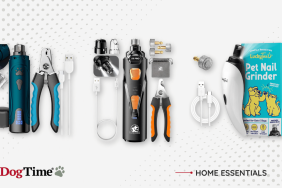Most pet owners treat Fido or Fluffy like another member of the family, with birthday parties and Christmas stockings full of rawhide hanging on the mantle. These pet owners come from the school of thought that a pet is not just a pet–he or she is a beloved member of the family, an integral part of the home and a loyal best friend.
If the time comes to relocate, having a general knowledge of how the process works and answers to common questions will help ease concerns about the pet’s upcoming move, and can facilitate a smooth transition from the relocation counselor to the pet relocation company.
How does the pet relocation process work?
Pet relocation companies boast the ability to serve the entire world. The practice itself is fairly straightforward: pets are typically picked up at the transferee’s residence, checked in at the departure airport, then cleared through customs upon arrival and delivered to their owner’s new residence. Pet relocation specialists are also usually responsible for selecting appropriate flight arrangements, carefully reviewing the import and export documents, and counseling the transferee on the intricate details of their pet’s move.
Some pet relocation services arrange door-to-door moves by opening offices at major hubs or franchising their businesses in various parts of the world. However, a pet is not always traveling to and from the main ports of entry–sometimes it is necessary to facilitate customs clearances or deliveries in more obscure cities and countries. Most reputable pet relocation companies are members of a group called the Independent Pet and Animal Transportation Association (IPATA). The association regulates and monitors the pet transportation industry by setting ethics standards and overseeing the performance of their members. As part of their membership, companies are given access to a network of pet transportation professionals worldwide who have guaranteed reputations for the services they provide.
“IPATA is crucial to upholding quality service for pet relocations,” said current IPATA president, Gay O’Brien. “If a company wants to ensure their transferee’s clients are receiving the highest level of care, with careful attention paid to the well-being of the pets, IPATA’s listing of member companies is the best place to start.” IPATA is compromised of a menagerie of pet transportation professionals–local pet taxis and veterinarians, major corporations, and even freight forwarders and customs brokers.
Due to IPATA’s exacting standards for membership, affiliates are able to safely coordinate the door-to-door service for the most precious of cargo. As a way of bridging the gap often found in a global industry, IPATA also offers an annual conference where the members gather to meet and exchange ideas, attend classes on country import requirements and species-specific handling techniques, and attend forums where representatives from major airlines come to answer questions in a round-table format. International requirements vary from country to country, so working with a quality pet relocation company who is also up to date on the current import requirements is crucial.
These intricacies can often affect the overall cost and many people tend to underestimate the rates surrounding a complete door-to-door relocation for a pet. The cost of the pet move is made up by the ground transportation to and from the airports, the documentation and import fees, and the air freight charges for the pets. When pets travel as cargo, the airlines generally charge for the dimensional weight of the travel crate, which can sometimes mean that the cost of a one-way international flight for a pet traveling overseas costs the same amount as a first-class, round trip ticket for his owner.
Important Questions for Important Members of the FamilyThe general transportation procedure may be understood by the transferee but there are often concerns regarding the care and safety of their beloved pets, rather than the “nuts and bolts” of the logistics. “Most important is how our clients feel about [their pet’s move],” said Rick Olson, Regional Operations Manager of Crown Relocations in Los Angeles. “It is a foreign process to them loaded with emotion and concern.” These sentiments and anxieties can lead to a multitude of questions that a relocation professional might be faced with.
Many myths surround pet safety and air travel, which perpetuates anxieties that a transferee inevitably has when they first start contemplating a pet move. Most of the horror stories that circulate about pets flying are a direct result from pet owners attempting to fly their pets on their own. Anyone who has ever tried to highlight their hair using an at-home kit, or build a deck after picking up some two-by-fours at the local hardware store, knows that some processes, while not impossible to do on one’s own, are better left to professionals. It helps to remind the transferee that they will be in experienced hands–for professional pet relocation companies, their duty is to ensure that every pet arrives safely and without incident.
The risk of extreme temperatures affecting the pet’s safety is one of the other common concerns among pet owners–many airlines will even embargo pets during the winter and summer months. However, most reputable pet relocation companies work with airlines that have programs in place to keep pets in climate-controlled areas the entire duration of the flight. The pet is never exposed to inclement weather and this allows companies to relocate pets all over the world year-round. Dogs escaping from or getting hurt while in their crates is an example of why pet relocation companies emphasize to clients that they crate train their pet before the day of the flight. Some relocation companies can even arrange professional crate training classes for them. It is important to contact the pet relocation company as soon as a potential transferee mentions they might be relocating their pet as the more time he can spend getting used to his new crate, the more relaxed he will be on the day of his flight.
There are three different ways a pet can travel on an airplane: with the owner in the passenger cabin, as accompanied (or excess) luggage in the cargo hold, or as manifest cargo (typically without the owner). Most owners initially want to take their pets in the cabin, but unfortunately due to airline restrictions on weight and size limits, as well as various government restrictions for international imports, rarely does a pet qualify to fly in the cabin. However, as long as care is taken in choosing the correct airline, the cargo hold where the pet will travel is always pressurized and climate-controlled. This means a transferee’s pet will travel in comfort even when apart from his owner.
While direct flights are ideal, direct routing is not the only factor when choosing which airline a pet should fly on. Some airlines are not adequately set up to take care of pets in the event that there is a delay or emergency. “Pet friendly” airlines such as Continental Airlines and KLM Royal Dutch Airlines have created dedicated pet programs to care for their four-legged travelers that keep pets in climate control not only while in the plane, but also while waiting to board. These airlines also have kennel facilities at their main hubs, where during layovers, all of the pets pet are checked on, watered and if necessary, fed.
Despite all of this careful attention, there are still some pets that most pet relocation companies consider to be “at risk” when traveling. Older, infirm dogs and cats can travel as there is no age limit, but it is always best for the transferee to seriously consider the amount of stress an elderly pet can endure. High-anxiety pets also pose a risk for hyperventilation and injury to themselves if they are not properly crate trained and conditioned ahead of time. Snub-nosed dogs such as Pugs and English bulldogs are at an elevated risk for traveling due to their delicate respiratory systems which can become impaired under high stress situations. The length of travel and the pet’s individual personality can contribute to the amount of risk. Ultimately, it’s left at the pet owner’s discretion to make an informed decision after consulting with their pet relocation specialist and veterinarian.
It’s a Big World After All
For transferees making international moves, the idea of sending their pet to a new country becomes even more daunting and worrisome. The variety of import requirements and quarantine restrictions can be overwhelming at first. Each country has its own set of individual import and export requirements, and it is important that the pet relocation professional have a familiarity with shipping to and from the transferee’s destination. International relocations for pets, just like their human counterparts, require months of advance planning and careful attention to paperwork details. A pet relocation company ensures that all of the documentation is in order before the pet leaves the origin country so there are no delays or problems upon arrival.
The most common misconception is regarding quarantine facilities and the level of care found at them. Countries with unavoidable quarantine periods, such as Singapore and Australia, have created very comfortable, clean areas for pets to stay, not unlike modern boarding facilities found in the US. Singapore’s quarantine facility has visiting hours when owners can take their pets outside to designated pens for exercise. The one caveat with these facilities is that they often fill up months in advance so it is crucial for transferees to be connected with their pet relocation specialist early on so the quarantine booking can be made ahead of time. Other countries like the UK and Japan have mandatory six month quarantines; however this can usually be avoided by doing what is known as “home quarantine.” Pets must undergo a series of rabies shots followed by a blood test and then wait out the requisite amount of time. This also requires ample advance planning and careful attention to the order in which the inoculations must be given.
Certain countries also have restrictions on what types of animals can be imported and exported. For example, many countries have banned American Pit Bull Terriers altogether, due to their aggressive reputations. Switzerland doesn’t allow animals with docked ears and tails into the country without proof that the owner of the pet is moving to Switzerland, such as a visa or residency permit. A recent policy change in Indonesia disrupted many relocating pet owners. In September of 2007, Indonesia banned all animals coming from anywhere in the United States (with the exception of Hawaii).
Import and export policies become even more difficult when dealing with exotic pets or animals like wild birds protected by international trade laws. It is crucial that exotic animals such as these be exported properly, because if the owner ever needs to move their pet again, they will need to show the past documentation showing that the animal was legally brought into the country initially. All of these delicate matters make up the stepping stones of an international pet relocation and are why it often takes several months to prepare all of the necessary documentation.
Home at Last
After all of the stressors of moving, a transferee is ultimately the happiest when their pet arrives safely at their new location. Through careful planning and open communication between the transferee and the pet relocation specialist, a corporate relocation professional doesn’t have to concern themselves with the intricacies of a pet move. From Albany to Amsterdam, pet owners around the world will agree that their house isn’t a home until their best friend is resting quietly beside them.
Source: Article courtesy of PetRelocation.com









